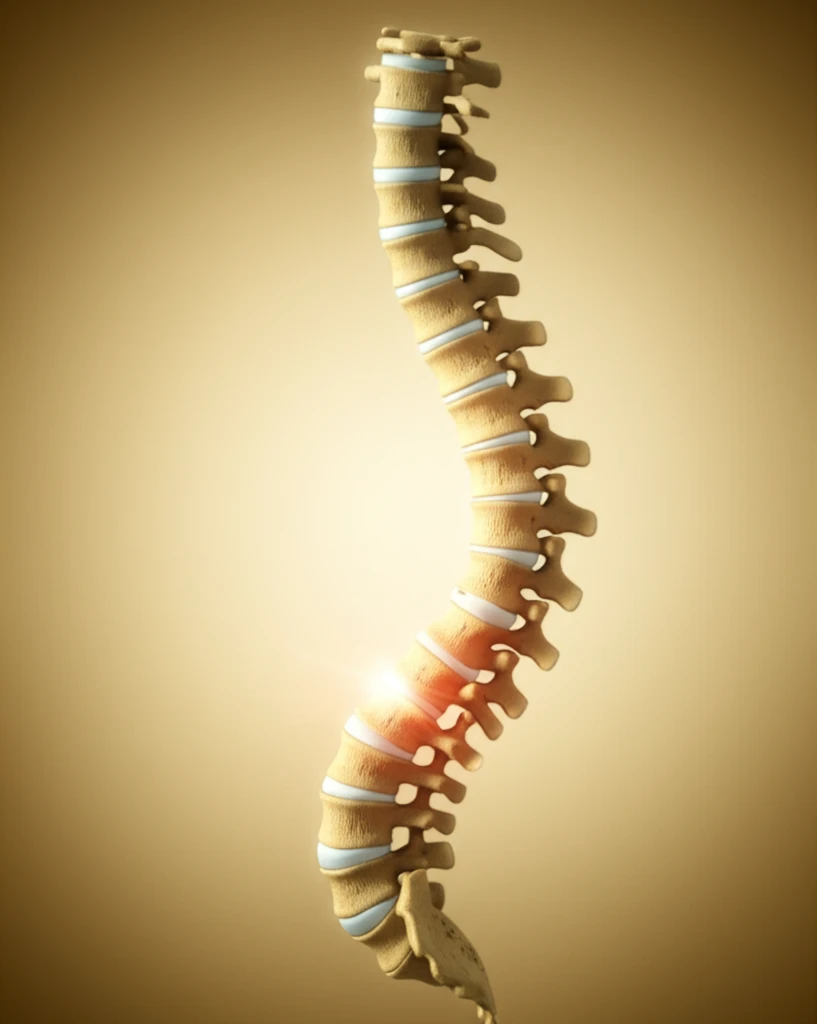
Suffering from Spondylolisthesis? Discover How Spinal Fusion Can Help!
"Exploring the Benefits of Spinal Fusion with Interbody Devices (CAGE) for Spondylolisthesis."
Spondylolisthesis, a condition where one vertebra slips over the one below it, can cause significant back and leg pain, impacting daily life. While various treatments exist, lumbar spinal fusion has emerged as a common surgical approach, often involving the use of interbody fusion devices (cages) to stabilize the spine. These cages aim to promote fusion (the joining of two vertebrae into one solid bone) and enhance the construct's overall stability.
For individuals experiencing persistent pain and instability despite conservative treatments, spinal fusion might offer a solution. This procedure aims to alleviate pain, improve function, and prevent further slippage of the vertebrae. The decision to undergo spinal fusion, however, should be made in consultation with a qualified spine surgeon after careful consideration of individual circumstances and potential risks and benefits.
This article will delve into the specifics of anterior spinal fusion with or without interbody fusion devices (CAGE) for spondylolisthesis. It is based on a research study that assessed the functional and radiological outcomes of patients undergoing this procedure. It will provide a clear understanding of what the surgery entails, what to expect during recovery, and the potential benefits it can offer.
Is Spinal Fusion with Interbody Cage Right for You? Understanding the Research

A prospective nonrandomized study examined adults aged 28 to 68 years with LSS who underwent spinal fusion with or without an interbody cage. The study, conducted between 2010 and 2012, meticulously tracked patient progress through clinical follow-ups at 6 weeks, 3, 6, and 12 months. These follow-ups included assessments of pain levels using the visual analog scale (VAS), fusion progress via radiographs (AP, lateral, and flexion-extension views), and overall functional outcome measured by the Oswestry disability index (ODI), SF-36, and a modified Benzel Japanese Orthopaedic Association score.
- Faster Union: Earliest union was observed at 6 months follow-up in 30% of the bone graft (BG) group and 50% of the cage group (CG).
- Improved Radiological Union: At the end of 1 year, 90% of the BG group and 100% of the CG group showed radiological union.
- Fusion Rate: Average fusion rates were 10 and 8.5 months in the BG and CG groups, respectively.
- Radicular Improvements: Radicular improvements were noted in 70% and 90% of the BG and CG groups, respectively.
- Better Functional Outcome: Functional outcome was significantly better at 3, 6 months, and 1 year in both groups (p<0.001).
- Fewer Complications: Complications were observed in 60 and 20% of cases in the BG and CG groups, respectively.
- Patient Satisfaction: Patient satisfaction was 80% and 90% in the BG and CG groups, respectively.
Making an Informed Decision About Spinal Fusion
Spinal fusion with an interbody cage can be an effective treatment option for spondylolisthesis, offering potential benefits like increased stability, reduced pain, and improved function. The decision to undergo surgery should be made after thorough discussion with your healthcare provider, carefully weighing the potential benefits and risks.
Remember that while the study suggests advantages to using interbody cages, individual results can vary. A comprehensive evaluation, including imaging and neurological assessment, is crucial to determine the most appropriate treatment plan for your specific condition.
If you are considering spinal fusion, ask your surgeon about their experience with interbody fusion devices, the specific type of cage they recommend, and what to expect during the recovery process. Actively participate in the decision-making process to ensure the best possible outcome for your spinal health.
